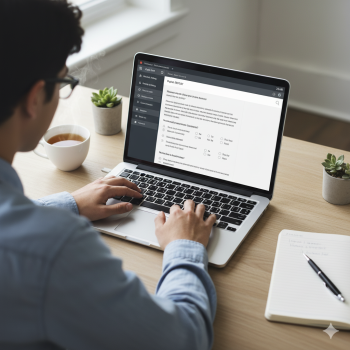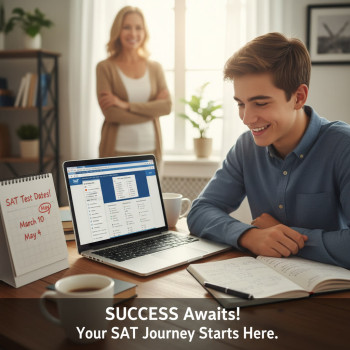Introduction: Why a thoughtful bag matters more than you think
Test days can feel like tiny storms — excitement, nerves, and a long to-do list. For parents, the urge to over-prepare is real: you want your teen to have everything they need and nothing they don’t. Packing one sensible, calm bag the night before the Digital SAT is one of the best ways to turn those nerves into confidence. This guide walks you through what to pack, what to leave at home, and why each item matters — all with a practical, parent-friendly tone and a few real-world tips that actually work.

Quick overview: The essentials versus the optional
There are a few non-negotiable items your teen absolutely needs for the Digital SAT — and several “nice-to-have” things that make the day smoother. Think of it like packing for a short trip: essentials first, creature comforts next, and things that are actually prohibited stay home. Below is a quick snapshot to anchor your packing decisions.
Non-negotiables
- Fully charged approved testing device with the Bluebook app installed and exam setup completed (or the school’s provided/testing device if applicable).
- Up-to-date admission ticket (digital or printed — printed is preferred for quick check-in).
- Acceptable physical photo ID when required (for away students or certain school policies).
- Pencils/pens for scratch work.
- Comfortable clothing layered for variable room temperatures (hoodie with hood down during testing is fine).
Nice-to-haves
- Portable charger and charging cable (outlets aren’t guaranteed).
- Watch without an audible alarm (Bluebook has a timer but some students like to track break time).
- Healthy snacks and a drink for the break.
- Small clear bag for any medical items (EpiPen, inhaler) — store under the desk as required.
Deep dive: Exactly what to pack the night before
Now let’s walk through a detailed, parent-tested checklist. Lay everything out the night before so your teen can do one final visual check in the morning — this reduces anxiety and leaves room for a calm breakfast conversation rather than a frantic hunt for missing items.
1. The testing device and Bluebook readiness
The Digital SAT runs in the Bluebook testing application. If your teen will test on a personal or school-provided device, the device must be fully charged and have Bluebook installed. If the device is borrowed from school, confirm the lending details and bring any required accessories.
- Device fully charged (aim for 100% or bring a charged portable power bank).
- Bluebook app installed and exam setup completed — this usually becomes available a few days before the test.
- Backup device if permitted or available (some schools allow a backup; check local guidance).
2. Admission ticket and account details
College Board generates an admission ticket for each test. Although many things are digital nowadays, printing the ticket and putting it in the bag makes check-in smoother. Also, ensure your teen knows their College Board username and password and has it memorized or keyed into a secure place (not a sticky note on the device).
3. Photo ID and identity rules (when applicable)
Most students testing at their regular school won’t need to show ID. However, if your teen is testing at a different location or is an away student, an acceptable physical photo ID is typically required. Keep the physical ID in a safe, accessible pocket of the bag — not buried under snacks.
4. Scratch tools: pencils, pens, and rough paper
Even though the SAT is digital, scratch work still matters. Bring a couple of pencils and a pen for the break; scratch paper policies vary by administration, so your teen will use whatever the proctor provides for rough work. Having a sharp pencil and eraser in the bag prevents panicked borrowing.
5. Calculator considerations
The Bluebook test provides an embedded graphing calculator for the Math portion. If your teen prefers a familiar physical calculator and it is allowed under the calculator policy, pack it (check device and model rules ahead of time). Many students are perfectly happy with the built-in Desmos-style tool, but others find a physical calculator reassuring.
6. Health and safety items
Medications and medical devices are permitted; however, they often need to be stored in specific ways. For example, epinephrine auto-injectors can be kept in a clear bag and stored under the desk. If your teen requires medication during the day, pack it clearly labeled and notify the proctor before testing.
- Prescription medication in original labeled container (if needed).
- Small clear bag for EpiPens or emergency medication — stored under the desk.
- Hand sanitizer and a small tissue pack (if allowed).
What to leave at home (and why)
Knowing what not to pack is as important as knowing what to bring. The testing environment is strict because fairness and security matter. Here’s a clear list of banned items so you can coach your teen to leave them at home or in the car.
Commonly prohibited items
- Phones, smartwatches, fitness trackers, headphones, earbuds, and other electronic devices (unless approved as an accommodation).
- Watches with alarms or audible alerts.
- Books, notes, papers of any kind, or reference materials.
- Colored pens, highlighters, and rulers unless explicitly allowed for a specific accommodation.
- Food that’s noisy, sticky, or requires utensils — keep snacks simple and clean.
Timing, logistics, and comfort: More than just stuff
Packing functions best when coupled with good logistics. The night-before and morning-of routine sets the tone for an easy test day.
Night-before checklist
- Lay out the testing bag with all essentials visible.
- Confirm Bluebook exam setup and admission ticket availability.
- Plan the travel route and parking; build in extra time for unexpected delays.
- Encourage a calm sleep routine: screen curfew, a relaxing activity, and a consistent bedtime.
Morning-of tips
- Simple, nutrient-rich breakfast (oatmeal, eggs, fruit, yogurt — avoid heavy or unfamiliar foods).
- Hydration without overdoing it — a water bottle is great, but remind your teen to sip rather than guzzle right before the test.
- Dress in layers — testing rooms vary widely in temperature and are often cooler than expected.
- Double-check the bag against the laid-out checklist: ticket, device, charger, photo ID (if needed), snacks, and medications.
A parent’s role without hovering: Balancing support and independence
Parents want to help, but test day is also a milestone in teenagers’ growing independence. Your role is to be the calm anchor: provide practical help, then step back while letting your teen own the process. Here are a few phrases and actions that strike the right balance.
Supportive things to say
- “We’ve got everything laid out. You’re ready.”
- “Remember to breathe and use your breaks. You’ve practiced this.”
- “I’ll be nearby when you’re done. Call me if you need a ride home or want to decompress.”
Practical parental actions
- Confirm transportation plans and give an extra 15–20 minutes of buffer time.
- Provide a calm breakfast and a positive send-off — avoid teaching new strategies the morning of the test.
- If anxiety is high, consider a short grounding exercise together: 4–4–4 breathing (inhale 4 seconds, hold 4, exhale 4).
Sample packing table: A compact view for printing
| Category | Item | Why it matters |
|---|---|---|
| Device | Fully charged laptop/tablet with Bluebook | Required to take the Digital SAT; must be set up ahead of time |
| Admission | Printed/digital admission ticket | Streamlines check-in and avoids delays |
| ID | Physical photo ID (if needed) | Required for away students or certain testing sites |
| Tools | Pencils, eraser, pen | Scratch work and notes during breaks |
| Health | Medications in labeled containers | Essential for safety and allowed with proper handling |
| Comfort | Light snack, water, hoodie | Maintains energy between sections and handles temperature shifts |
Snack ideas that actually help performance
Food is fuel. The break is short, so focus on compact, familiar, and non-messy choices that deliver steady energy without a sugar crash. Pack snacks your teen has eaten before — test day is not the time for culinary experiments.
- Banana or apple slices (pre-sliced if your teen prefers).
- A small container of nuts or trail mix (if permitted by the testing center and not a choking risk).
- Plain crackers or a small whole-grain sandwich for sustained energy.
- A small water bottle to stay hydrated but not uncomfortable.
Tech hiccups: a calm plan B
Technology can be unpredictable. If Bluebook or a device acts up, test centers and proctors have established protocols to get students back on track. Still, it helps to be prepared with these parent-friendly steps:
- Pack a fully charged portable charger and cable in the bag.
- Confirm whether the testing center provides backup devices (many do for in-school testing).
- If a device problem prevents testing, stay calm and ask the proctor how the center handles late starts or makeup testing. College Board policies cover technical irregularities — the proctor will follow them.
Practice and coaching: where Sparkl fits in naturally
Preparation can reduce last-minute anxiety. Personalized tutoring — like Sparkl’s one-on-one guidance — can help your teen build reliable habits, create tailored study plans, and practice using the Bluebook interface under test-like conditions. Tutors who know the Digital SAT can pinpoint strategy weaknesses and offer AI-driven insights to personalize practice so your teen shows up on test day with confidence, not doubt.
Special situations and accommodations
If your teen receives testing accommodations through Services for Students with Disabilities (SSD), coordinate with your school and College Board well in advance. Pack any approved assistive devices, extra time plans, or medication as required. If you’re unsure about allowed devices or procedures, your SSD coordinator or the school testing administrator should be your first call.
After the test: supportive actions parents can take
The minutes and hours after the test are prime opportunities for emotional support, not interrogation. Avoid rapid-fire questions about every question. Instead, focus on recovery and perspective.
What to do in the first hour
- Offer a calm ride home and a relaxed environment for decompressing.
- Serve a favorite light meal and let your teen share as much or as little as they like.
- Refrain from immediate score speculation. Digital scores come through College Board channels when ready.
Longer-term perspective
Remember that one test is one snapshot. If your teen wants a do-over, future administrations and retakes are available. Encourage reflection on study habits rather than obsessing about individual test items. If targeted improvements are needed, consider a tailored plan that might include focused tutoring sessions or practice through official Bluebook practice tests.

Sample printable checklist (copy and paste for a fridge note)
- Fully charged testing device with Bluebook installed — done?
- Printed admission ticket — done?
- Photo ID (if testing away) — done?
- Pencils/pen and eraser — done?
- Portable charger & cable — done?
- Healthy snack & water — done?
- Medication labeled & ready (if needed) — done?
- Comfortable layered clothing — done?
Final thoughts: Pack calm, not panic
Parents set the tone. A well-packed bag and a calm morning create a ripple effect of confidence. The Digital SAT format changes some logistics — Bluebook app, device rules, and built-in calculators — but the fundamentals remain the same: good sleep, a steady breakfast, familiar snacks, and an atmosphere of quiet support. Help your teen prepare practically, coach them gently, and trust that a calm, organized start makes a big difference.
If your family is looking for tailored day-of strategies, or practice that mirrors the digital experience, guided one-on-one support — such as Sparkl’s personalized tutoring with targeted study plans and AI-driven practice insights — can be a helpful supplement. But whatever your preparation path, the night-before packing ritual is simple: prioritize the essentials, leave distractions behind, and show up as the calm parent your teen needs.
Good luck — and remember: this is one step of many on the college journey. With the right preparation, your teen will walk into the testing room ready to do their best.















No Comments
Leave a comment Cancel